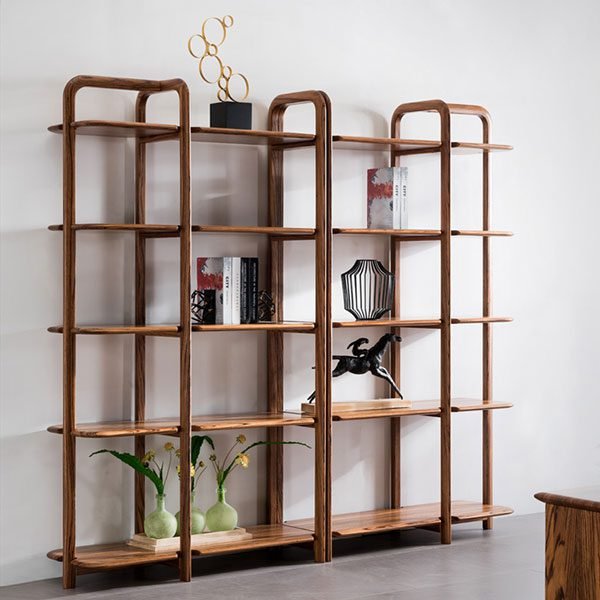“Protect your furniture, train your dog.”
Effective Training Techniques to Prevent Dog Chewing on Furniture
Effective Training Techniques to Prevent Dog Chewing on Furniture
Dogs are known for their playful nature, but sometimes their playfulness can lead to destructive behavior, such as chewing on furniture. Not only can this be frustrating for dog owners, but it can also be costly to replace or repair damaged furniture. Fortunately, there are effective training techniques that can help prevent your dog from chewing on furniture.
One of the first steps in preventing your dog from chewing on furniture is to provide them with appropriate chew toys. Dogs have a natural instinct to chew, so it’s important to give them an outlet for this behavior. Choose toys that are specifically designed for chewing and make sure they are durable and safe for your dog to play with. By redirecting their chewing behavior to these toys, you can help prevent them from turning to your furniture.
Consistency is key when it comes to training your dog. Establishing a set of rules and boundaries will help them understand what is acceptable behavior and what is not. When you catch your dog chewing on furniture, firmly say “no” and redirect their attention to a chew toy. Consistently reinforcing this behavior will help them understand that chewing on furniture is not allowed.
Another effective training technique is to use deterrents. There are several products available on the market that are specifically designed to deter dogs from chewing on furniture. These products usually have a bitter taste or smell that dogs find unpleasant. By applying these deterrents to your furniture, you can discourage your dog from chewing on it. However, it’s important to note that these deterrents should be used in conjunction with positive reinforcement training, as simply relying on the deterrent alone may not be effective.
Positive reinforcement is a powerful tool in dog training. When your dog exhibits good behavior, such as chewing on their toys instead of furniture, be sure to praise and reward them. This can be done through verbal praise, treats, or a combination of both. By rewarding your dog for making the right choices, you are reinforcing the desired behavior and encouraging them to continue behaving in that way.
It’s also important to provide your dog with plenty of physical and mental stimulation. Dogs that are bored or under-stimulated are more likely to engage in destructive behaviors, such as chewing on furniture. Make sure your dog gets regular exercise and playtime to burn off excess energy. Additionally, provide them with interactive toys and puzzles that will keep their minds engaged and prevent boredom.
In some cases, seeking professional help may be necessary. If your dog’s chewing behavior persists despite your best efforts, it may be beneficial to consult with a professional dog trainer or behaviorist. They can assess the underlying causes of the behavior and provide you with tailored training techniques to address the issue.
In conclusion, preventing your dog from chewing on furniture requires a combination of training techniques and consistency. By providing appropriate chew toys, establishing rules and boundaries, using deterrents, and reinforcing positive behavior, you can effectively train your dog to stop chewing on furniture. Remember to provide plenty of physical and mental stimulation to prevent boredom, and don’t hesitate to seek professional help if needed. With patience and persistence, you can successfully prevent your dog from damaging your furniture.
Choosing the Right Chew Toys to Distract Your Dog from Furniture
Choosing the Right Chew Toys to Distract Your Dog from Furniture
Dogs are known for their love of chewing, but when they start chewing on your furniture, it can be frustrating and costly. Fortunately, there are ways to redirect their chewing behavior and save your furniture. One effective method is to provide your dog with appropriate chew toys. In this article, we will discuss how to choose the right chew toys to distract your dog from furniture.
First and foremost, it is important to understand that not all chew toys are created equal. Some toys may be too hard and can damage your dog’s teeth, while others may be too soft and easily destroyed. It is crucial to find toys that are durable and safe for your dog to chew on.
When selecting chew toys, consider the size and breed of your dog. Larger dogs may require stronger toys, while smaller dogs may prefer softer toys. Additionally, consider your dog’s chewing style. Some dogs are aggressive chewers and may need toys that can withstand their strong jaws, while others may be more gentle and prefer softer toys.
Another factor to consider is the material of the chew toys. There are a variety of materials available, including rubber, nylon, and plush. Rubber toys are often a good choice as they are durable and can withstand heavy chewing. Nylon toys are also durable and can help clean your dog’s teeth. Plush toys, on the other hand, may be more suitable for gentle chewers.
It is also important to choose chew toys that are specifically designed for dogs. Avoid giving your dog household items, such as old shoes or socks, as this can confuse them and encourage them to chew on other household items, including your furniture. Stick to toys that are made for dogs and are safe for them to chew on.
When introducing a new chew toy to your dog, it is important to supervise them initially. Watch how they interact with the toy and ensure that they are using it appropriately. If they start to chew on furniture instead, redirect their attention to the chew toy and praise them when they chew on it. Consistency is key in training your dog to chew on appropriate items.
In addition to providing chew toys, it is important to ensure that your dog is getting enough exercise and mental stimulation. Dogs often chew out of boredom or excess energy. By providing them with regular exercise and engaging activities, you can help prevent them from turning to your furniture for entertainment.
In conclusion, choosing the right chew toys for your dog is essential in preventing them from chewing on your furniture. Consider the size, breed, and chewing style of your dog when selecting toys. Choose toys that are durable and safe for your dog to chew on. Supervise your dog when introducing a new toy and redirect their attention if they start chewing on furniture. Remember to provide your dog with enough exercise and mental stimulation to prevent boredom chewing. With the right chew toys and proper training, you can save your furniture from your dog’s chewing habits.
Creating a Dog-Friendly Environment to Discourage Furniture Chewing
Creating a Dog-Friendly Environment to Discourage Furniture Chewing
Dogs are known for their playful nature, but sometimes their playfulness can lead to destructive behavior, such as chewing on furniture. Not only can this be frustrating for dog owners, but it can also be costly to replace or repair damaged furniture. Fortunately, there are steps you can take to create a dog-friendly environment that will discourage your furry friend from chewing on your furniture.
First and foremost, it’s important to provide your dog with plenty of appropriate chew toys. Dogs have a natural instinct to chew, so it’s essential to give them an outlet for this behavior. Invest in a variety of chew toys made specifically for dogs, such as rubber bones or puzzle toys. These toys will not only keep your dog entertained but will also help to satisfy their chewing needs.
In addition to providing chew toys, it’s crucial to establish boundaries for your dog. Dogs need to understand what is acceptable to chew on and what is off-limits. One way to do this is by using positive reinforcement training. Whenever you catch your dog chewing on an appropriate toy, praise and reward them. Conversely, if you catch them chewing on furniture, firmly say “no” and redirect their attention to a chew toy. Consistency is key in training your dog, so be sure to reinforce these boundaries consistently.
Another effective way to discourage furniture chewing is by using deterrents. There are various products available on the market that are designed to deter dogs from chewing on furniture. These products typically have a bitter taste or unpleasant smell that dogs find unappealing. Simply spray or apply the deterrent onto the furniture that your dog is prone to chewing, and they will quickly learn to avoid it. It’s important to note that these deterrents should be safe for both your dog and your furniture, so be sure to read the instructions carefully before using them.
Creating a safe and comfortable space for your dog is also essential in preventing furniture chewing. Dogs often chew out of boredom or anxiety, so it’s important to provide them with plenty of mental and physical stimulation. Make sure your dog gets regular exercise and playtime, as this will help to tire them out and reduce their desire to chew. Additionally, consider providing your dog with a designated area, such as a crate or a specific room, where they can go when they need some alone time or when you’re unable to supervise them. This will not only give your dog a sense of security but will also prevent them from having access to furniture that they may be tempted to chew on.
Lastly, it’s important to be patient and understanding with your dog. Chewing is a natural behavior for dogs, and it may take time for them to learn what is acceptable to chew on. If you find that your dog is still chewing on furniture despite your efforts, it may be helpful to consult with a professional dog trainer or behaviorist. They can provide you with additional guidance and techniques to address the issue.
In conclusion, preventing your dog from chewing on furniture requires creating a dog-friendly environment. Providing appropriate chew toys, establishing boundaries, using deterrents, creating a safe space, and being patient are all important steps in discouraging this behavior. By implementing these strategies, you can help your dog develop good chewing habits and protect your furniture from unnecessary damage.
Заключение
Заключение: Чтобы предотвратить поведение жевания мебели у собаки, рекомендуется принять следующие меры:
1. Предоставьте достаточно игрушек для жевания, чтобы собака могла удовлетворить свою потребность в жевании. Выбирайте игрушки, специально предназначенные для жевания, чтобы собака не переключалась на мебель.
2. Обеспечьте достаточно физической и умственной активности для собаки. Регулярные прогулки, игры и тренировки помогут уменьшить стресс и склонность к жеванию.
3. Поддерживайте собаку в хорошей физической форме и здоровье. Регулярные посещения ветеринара помогут выявить любые потенциальные проблемы, которые могут привести к жеванию мебели.
4. Используйте спреи или аэрозоли с неприятным вкусом на мебели, чтобы отпугнуть собаку от жевания. Однако, убедитесь, что эти средства безопасны для использования и не вызывают вреда для собаки.
5. Прилагайте усилия для тренировки собаки и учите ее командам “не трогай” или “отпусти”. Поощряйте положительное поведение и награждайте собаку за игру с игрушками вместо мебели.
6. Если проблема продолжается, обратитесь к профессиональному тренеру или ветеринару для дополнительной помощи и советов.



